Traveling Risk

Is it safe to carry large amounts of cash when traveling ?
When it comes to traveling, there are a variety of considerations that must be taken into account. One such consideration is whether or not it is safe to carry large amounts of cash while on the go. In this article, we will explore the potential risks and benefits associated with carrying large sums of money when traveling. One of the most significant risks associated with carrying large amounts of cash is the possibility of theft or robbery. This risk can be particularly high in areas where crime rates are high or in countries where pickpocketing and other forms of theft are common. Another risk associated with carrying large amounts of cash is the possibility of loss or disaster. For example, if your wallet or purse is lost or stolen, you may lose all of the cash that you were carrying with you. Similarly, if you are involved in an accident or natural disaster, your cash could be damaged or destroyed. Carrying large amounts of cash can also be risky due to fluctuating currency exchange rates. If you are traveling to a country with a different currency than your own, you may find that the value of your cash decreases over time as exchange rates change. Despite these risks, there are also some potential benefits to carrying large amounts of cash when traveling. These include convenience, no fees or charges, and accessibility in situations where other forms of payment may not be readily available. However, there are also several alternatives that travelers can consider, such as credit cards, debit cards, prepaid cards, and mobile payment apps like Apple Pay and Google Wallet. In conclusion, carrying large amounts of cash when traveling can be both risky and beneficial depending on various factors. While it may offer convenience and accessibility in certain situations, it also poses significant risks such as theft, loss, and fluctuating currency exchange rates. As such, travelers should carefully consider their options and weigh the potential benefits against the potential risks before deciding whether or not to carry large amounts of cash while on the go.

What are the best ways to avoid pickpockets and theft while traveling ?
When traveling, it's important to take precautions to avoid pickpockets and theft. Research your destination, keep valuables close, stay aware of your surroundings, don't flash your valuables, trust your instincts, use locks and safes, be careful with your phone and camera, and consider travel insurance. By following these tips, you can reduce the risk of falling victim to pickpockets and theft while traveling.

What are some tips for eating street food safely while traveling ?
When traveling, street food can be a delightful way to explore new flavors and cultures. However, it's essential to take precautions to ensure that your culinary adventures don't lead to illness. Here are some tips for eating street food safely while traveling: 1. Research Before You Go 2. Look for Cleanliness 3. Choose Busy Vendors 4. Stick to Cooked Foods 5. Avoid Raw Produce 6. Drink Bottled Beverages 7. Watch How the Food is Cooked 8. Trust Your Instincts

How do I navigate dietary restrictions while traveling ?
How to navigate dietary restrictions while traveling When traveling with dietary restrictions, it's important to do your research beforehand, pack snacks, be flexible, ask for substitutions, and take care of yourself. Researching your destination can help you find restaurants that cater to your needs, while packing snacks will ensure you have something to eat on the go. Being open-minded about new foods and flavors is also key, as well as asking for substitutions if needed. It's important to be aware of hidden ingredients in dishes and to take care of yourself both physically and mentally during your trip. By following these tips, you can navigate dietary restrictions while traveling with ease and enjoy your trip without any worries.
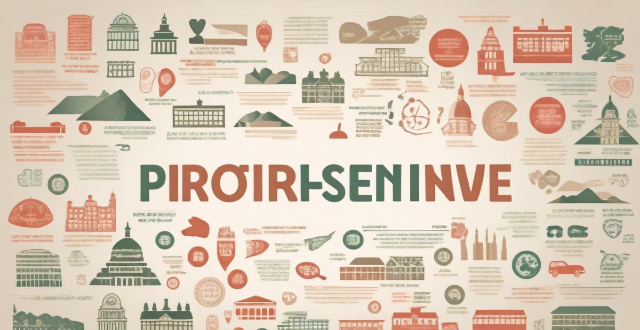
What steps should women take to research the safety of a destination before traveling ?
The provided text offers a comprehensive guide for women to research the safety of a destination before traveling. The steps include online research such as checking government travel advisories and joining travel forums, seeking professional advice from travel agents and security experts, planning ahead by making copies of important documents and informing someone about your itinerary, packing smart with items like personal alarms and door stop alarms, being prepared on the ground by dressing appropriately and learning basic phrases in the local language, and trusting your instincts to avoid potentially dangerous situations. By following these steps, women can enhance their safety while traveling and be better informed about potential risks.

How can women deal with sexual harassment or unwanted attention while traveling ?
Dealing with Sexual Harassment or Unwanted Attention While Traveling: - Be Aware of Your Surroundings - Dress Appropriately - Use Body Language - Learn Key Phrases in the Local Language - Keep Your Belongings Close - Stay in Groups - Trust Your Instincts - Seek Help When Needed - Document the Incident - Report Incidents When Appropriate

How can women protect themselves from pickpockets and theft while traveling ?
Traveling, especially for women, comes with risks such as pickpocketing and theft. To protect themselves, women should stay alert, dress appropriately, secure their belongings, stay connected, be cautious about trusting strangers, and choose safe accommodations. By following these guidelines, they can reduce their risk of falling victim to theft and enjoy a safe journey.

What are the most unique culinary experiences one can have while traveling ?
Traveling offers numerous opportunities to indulge in unique culinary experiences. Some of the most unique culinary experiences one can have while traveling include: 1. Trying traditional dishes and visiting local markets to sample street food and buy fresh produce. 2. Dining at authentic restaurants and participating in cultural festivals to learn about a country's food traditions. 3. Trying unusual foods such as insects, exotic fruits, and unusual meats, as well as sampling street food from different countries. 4. Tasting local wines and spirits, as well as enjoying traditional beverages that are an essential part of a country's culture. Overall, traveling allows people to step out of their comfort zone and try new things, including unique culinary experiences that are worth trying.

How do I find authentic ethnic restaurants when traveling abroad ?
Finding authentic ethnic restaurants while traveling abroad is a great way to immerse oneself in different cultures. Here's how you can find genuine ethnic restaurants during your travels: 1. Research before you go by reading reviews online, joining travel forums, and consulting local food blogs. 2. Ask locals for recommendations, including hotel staff, taxi drivers, shopkeepers, and people in public spaces. 3. Observe the crowd and look for places filled with locals, especially during lunchtime. 4. Dine like a local by eating at off-peak hours, trying regional specialties, and ordering family-style. 5. Use technology such as apps and maps to search for highly-rated restaurants in the area and filter by distance or rating. 6. Be open to new experiences and step out of your comfort zone to try authentic cuisine that may be different from what you're used to. By following these steps, you'll increase your chances of finding truly authentic ethnic restaurants while traveling abroad. Enjoy your gastronomic adventures!

How can women ensure they have access to medical care and support in case of illness or injury while traveling ?
How Can Women Ensure They Have Access to Medical Care and Support in Case of Illness or Injury While Traveling? Traveling can be an exciting adventure, but it's important to ensure that you have access to medical care and support in case of illness or injury. Here are some tips for women to ensure they have access to medical care while traveling: 1. Research Before You Go: Before embarking on your journey, research the local healthcare system and facilities. Look for hospitals, clinics, and pharmacies in the area you will be visiting. Make a list of emergency numbers and keep them with you at all times. 2. Get Travel Insurance: Consider purchasing travel insurance that includes medical coverage. This will give you peace of mind knowing that you are covered in case of an unexpected illness or injury. 3. Pack a First Aid Kit: Pack a first aid kit with essential items such as bandages, antiseptic wipes, pain relievers, and any prescription medications you may need. It's also a good idea to bring along copies of your prescriptions in case you need to refill them while traveling. 4. Stay Healthy: Take steps to stay healthy while traveling. Wash your hands frequently, eat nutritious meals, drink plenty of water, and get enough sleep. Avoid risky behaviors such as excessive alcohol consumption or participating in dangerous activities without proper safety gear. 5. Seek Help When Needed: If you do become ill or injured while traveling, don't hesitate to seek medical attention. Many countries have English-speaking doctors and nurses who can provide assistance. If you are unable to communicate effectively with local healthcare providers, consider using translation services or seeking out expatriate communities for support. In conclusion, ensuring access to medical care and support while traveling is crucial for women's health and safety. By doing your research beforehand, getting travel insurance, packing a first aid kit, staying healthy, and seeking help when needed, you can enjoy your travels with peace of mind knowing that you are prepared for any potential emergencies.
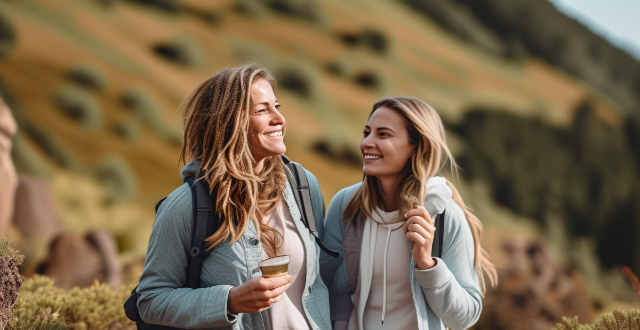
What are the best ways for women to avoid dangerous situations while on a trip ?
The article provides a comprehensive guide for women to stay safe while traveling. It emphasizes the importance of researching the destination, staying connected, trusting instincts, keeping belongings safe, being aware of surroundings, traveling with friends or joining groups, and learning self-defense techniques. Each section offers key points that highlight specific actions women can take to ensure their safety during their travels.
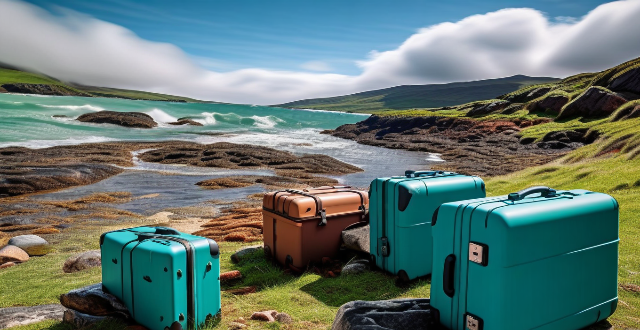
How can I protect my valuables while traveling ?
Protecting valuables while traveling involves using secure bags, being discreet, utilizing hotel safes, digitizing important documents, staying vigilant, distributing valuables, having insurance coverage, minimizing cash carrying, leveraging technology, and choosing safe accommodations.

What is the risk involved in investing in bonds ?
Investing in bonds carries risks such as interest rate, credit, inflation, liquidity, reinvestment, call, prepayment, foreign currency, and political/regulatory changes. Understanding and managing these risks is crucial for protecting your investment. Diversifying your portfolio across different types of bonds and monitoring market conditions can help mitigate these risks.

What are the key components of a successful disaster risk management plan ?
Key Components of a Successful Disaster Risk Management Plan include: 1. Risk Assessment 2. Prevention and Mitigation Strategies 3. Preparedness Activities 4. Response Mechanisms 5. Recovery and Rehabilitation 6. Continuous Improvement

How do you safely eat street food while traveling ?
Eating street food while traveling can be a delicious and authentic way to experience local cuisine. However, concerns about hygiene and food safety can make some travelers hesitant. To safely enjoy street food, consider these tips: 1. Observe hygiene practices at the stall, such as cleanliness and food preparation methods. 2. Choose popular stalls where food turnover is high and locals are eating. 3. Start with small portions to test your tolerance for new flavors. 4. Be selective with proteins, avoiding raw or undercooked meats and seafood. 5. Drink only bottled beverages and avoid tap water. 6. Use common sense; if something doesn't look or smell right, move on. 7. Have hand sanitizer ready and pack wet wipes for cleaning utensils. 8. Clearly communicate any allergies or dietary restrictions in the local language. 9. Enjoy the experience but don't overdo it; pace yourself and maintain a balanced diet. By following these guidelines, you can minimize risks and fully enjoy the authentic culinary experiences that travel offers.

Why is it important to conduct a climate risk assessment ?
Climate risk assessment is crucial for understanding the potential impacts of climate change on different sectors and systems, identifying vulnerabilities and risks, developing adaptation strategies and policies, enhancing resilience and reducing losses, and supporting decision making. It helps in building a more resilient and sustainable future for all.

How can governments implement climate risk management policies to protect their citizens and infrastructure ?
Governments can implement climate risk management policies by assessing the risks, developing a comprehensive plan, investing in resilience and adaptation measures, engaging stakeholders and building public awareness, and monitoring and evaluating progress.

How can I save money while traveling abroad ?
The text offers advice on saving money while traveling abroad. It suggests planning ahead, using public transportation, eating local food, staying in hostels or Airbnbs, using free Wi-Fi, shopping at local markets, taking advantage of discount cards, and avoiding peak season as ways to reduce costs without sacrificing the travel experience.
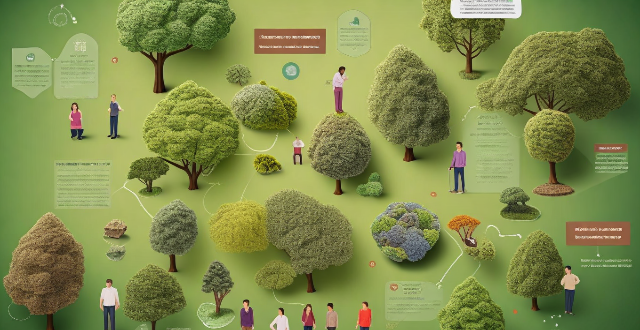
What is disaster risk management ?
Disaster risk management (DRM) is a comprehensive approach aimed at reducing the impact of natural and human-made disasters on communities. It involves understanding, assessing, and reducing risks through prevention, preparedness, response, and recovery strategies. The goal is to ensure that people's lives and livelihoods are not compromised by disaster events. Key components include risk assessment, hazard mitigation, early warning systems, emergency planning, community education, immediate action, coordination, rehabilitation, reconstruction, and sustainable development. Best practices involve multi-stakeholder collaboration, gender sensitivity, use of technology, inclusive planning, and regular review and updating. Challenges include limited resources, political will, information gaps, and cultural differences. Effective DRM requires a multifaceted approach that considers social, economic, and environmental factors.

What is climate risk assessment ?
Climate risk assessment is a systematic process that identifies, evaluates, and prioritizes the potential impacts of climate change on a specific region or sector. It involves analyzing the likelihood and severity of various climate-related risks, such as extreme weather events, sea level rise, and changes in temperature and precipitation patterns. The goal of climate risk assessment is to inform decision-makers about the risks associated with climate change and help them develop strategies to manage and adapt to these risks. Key components of climate risk assessment include identifying potential risks, evaluating their potential impacts, prioritizing them based on severity and likelihood of occurrence, and developing adaptation strategies to reduce potential impacts. By implementing these strategies, decision-makers can help ensure that their communities are better prepared for the challenges posed by climate change.

How does risk management relate to compliance and regulatory requirements ?
Risk management and compliance are interconnected aspects of organizational operations, aimed at safeguarding against potential losses and legal issues. Risk management identifies and prioritizes risks impacting objectives, while compliance ensures adherence to laws and regulations. An integrated approach enhances efficiency, and collaboration between departments is key for success. Regulatory requirements significantly influence risk management and compliance strategies, with direct rules and indirect environmental changes. Understanding these dynamics is vital for maintaining reputation and avoiding compliance breaches.

How do banks manage credit risk ?
Banks manage credit risk through a variety of methods and strategies to ensure the stability of their operations and protect against potential losses. They identify and assess credit risk using credit scoring models, financial analysis, and credit reports. They mitigate credit risk through diversification, collateral and guarantees, and credit derivatives. Banks monitor and control credit risk by ongoing monitoring, loan loss reserves, and regulatory compliance. In case of credit risk events, banks recover through workout agreements, legal recourse, and communication with stakeholders. By employing these strategies, banks aim to minimize credit risk while still providing essential lending services to support economic growth and individual prosperity.
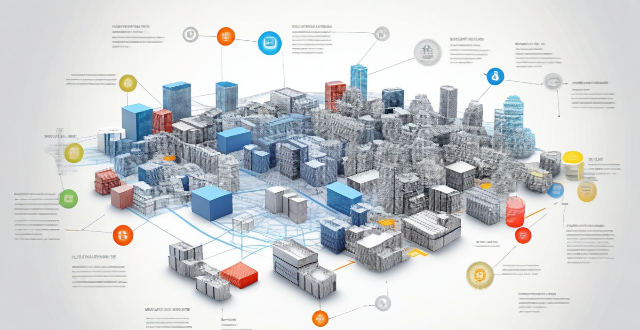
What role do scientists play in climate risk assessments ?
Scientists are crucial in climate risk assessments, analyzing data, developing models, and providing recommendations for mitigating risks. They collect data from multiple sources and use statistical methods to identify trends, create computer models to predict impacts, develop strategies to mitigate risks, and communicate their findings to build support for policies and actions.
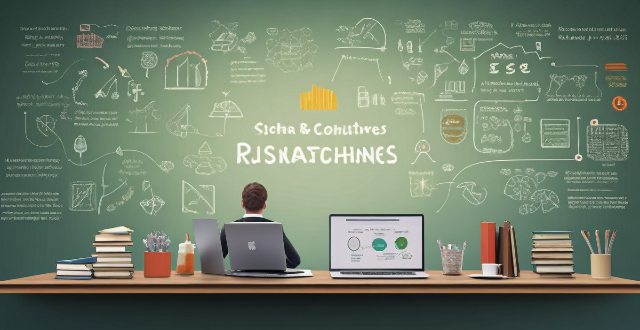
How can organizations create a culture of risk awareness among employees ?
Organizations can create a culture of risk awareness among employees by implementing strategies such as leadership buy-in, training and education, open communication channels, integrating risk management into daily operations, recognizing and rewarding risk awareness, and continuous improvement. These efforts will help employees proactively identify, assess, and manage risks more effectively.

How can companies implement effective risk management strategies ?
Effective Risk Management Strategies for Companies Risk management is a critical aspect of any business operation. It involves identifying, assessing, and prioritizing potential risks that could impact the company's objectives. Here are some effective risk management strategies that companies can implement: 1. Identify Potential Risks: The first step in implementing effective risk management is to identify potential risks. This involves analyzing the company's operations and processes to determine what could go wrong. Some common types of risks include financial risks, operational risks, strategic risks, and compliance risks. 2. Assess and Prioritize Risks: Once potential risks have been identified, they need to be assessed and prioritized based on their likelihood and potential impact. This involves assigning each risk a score based on its severity and probability of occurrence. The risks can then be ranked in order of priority, with the most significant risks being addressed first. 3. Develop Risk Mitigation Plans: For each identified risk, a mitigation plan should be developed. This plan should outline the steps that will be taken to reduce or eliminate the risk. Mitigation plans can include avoidance, reduction, transfer, or acceptance. 4. Monitor and Review Risks Regularly: Risk management is an ongoing process, and companies should regularly monitor and review their risks. This involves tracking changes in the business environment and updating risk assessments accordingly. It also involves evaluating the effectiveness of risk mitigation plans and making adjustments as needed. In conclusion, effective risk management strategies involve identifying potential risks, assessing and prioritizing them, developing mitigation plans, and regularly monitoring and reviewing them. By implementing these strategies, companies can reduce their exposure to risks and protect their operations and bottom line.

What are some good habits for green living while traveling ?
Adopting eco-friendly habits while traveling can help reduce your carbon footprint and contribute to sustainable tourism. Here are some good habits for green living while traveling: 1. Plan ahead by researching local recycling facilities, public transportation options, and eco-friendly accommodations. 2. Choose eco-friendly accommodations with energy-efficient lighting, water-saving showerheads, and recycling programs. 3. Use public transportation instead of renting a car or taking taxis to reduce greenhouse gas emissions and save money on transportation costs. 4. Bring reusable items such as water bottles, shopping bags, and utensils to reduce plastic waste while traveling. 5. Support local businesses by eating at locally owned restaurants, shopping at farmers' markets, and purchasing souvenirs made by local artisans. 6. Choose sustainable tourism activities that promote conservation and responsible tourism, such as guided nature walks and wildlife safaris. 7. Respect wildlife and nature by staying on designated trails, not littering, and not disturbing animals. 8. Save energy and water by turning off lights and electronics when not in use, taking shorter showers, and using energy-efficient appliances if available.

How can I stay safe while traveling alone in a new city ?
When traveling alone in a new city, prioritizing your safety is crucial. Here are some tips to help you stay safe while exploring unfamiliar places: - Research your destination and learn about its culture, customs, and potential dangers. Check for any travel advisories or warnings issued by your government. - Be prepared by having all necessary documents, such as passports, visas, and travel insurance. Keep copies of important documents in a separate place from the originals. - Stay connected with loved ones back home and keep them updated about your whereabouts. Use a reliable mobile network or Wi-Fi to maintain communication. - Trust your instincts and avoid situations that make you feel uncomfortable or unsafe. If something doesn't feel right, remove yourself from the situation immediately. - Take precautions with money and valuables by using a money belt, carrying only what you need, and avoiding displaying wealth in public. - Be aware of your surroundings at all times. Pay attention to exit routes, suspicious individuals, and any potential threats. - Use reputable transportation services like licensed taxis or ride-sharing apps. Avoid accepting rides from strangers or unmarked vehicles. - Dress appropriately for the local culture and climate. Avoid wearing flashy clothing or accessories that could attract unwanted attention. By following these tips, you can significantly reduce the risks associated with traveling alone in a new city and enjoy a safe and memorable adventure.
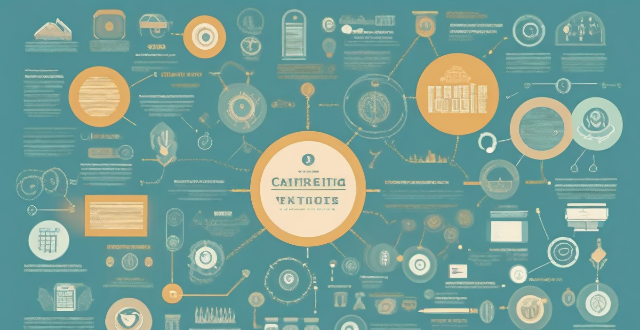
What are some common tools and techniques used in risk management ?
Risk management is a process that involves identifying, assessing, and prioritizing potential risks. There are various tools and techniques used in risk management, including brainstorming, Delphi method, checklists, qualitative and quantitative assessment, risk matrix, cost-benefit analysis, avoidance, reduction, transference, acceptance, continuous monitoring, and audits. These tools and techniques help organizations and individuals manage risks effectively and make informed decisions.

What are some tips for traveling with toddlers ?
Traveling with toddlers can be a rewarding experience if you prepare well. Pack essential and convenience items, plan ahead for flights and accommodations, stay flexible during the trip, and prioritize safety measures. By following these tips, you can make your journey more enjoyable for both you and your little one.

What vaccinations should I get before traveling to Africa ?
When planning a trip to Africa, it's essential to consider the necessary vaccinations to ensure your health and safety. The continent is vast, and the required immunizations can vary depending on which countries you will visit. Here are some general recommendations: - Yellow Fever Vaccine - Polio Vaccine - Hepatitis A Vaccine - Hepatitis B Vaccine - Rabies Vaccine - Meningococcal Meningitis Vaccine - Typhoid Fever Vaccine - Japanese Encephalitis Vaccine - Cholera Vaccine - Malaria Prevention It's crucial to consult with a healthcare provider or a travel medicine specialist at least 4-6 weeks before your trip to discuss your individual needs based on your itinerary, duration of stay, and personal medical history. They can provide personalized recommendations and ensure you have all the necessary vaccinations for a safe journey.